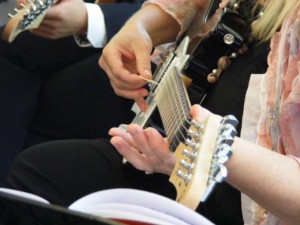RMIT Gallery reveals secrets of manga and anime
RMIT Gallery invites visitors to go behind the scenes of the final “polished” anime objects in the summer exhibition Revolutionising Anime: Production I.G's pursuit of ultra-realistic fantasy, from 21 January to 19 March.
The first Japanese animated film was made about 90 years ago, and now Japan is the anime capital of the world. Using an international language and expressing a story in a way understood universally, anime presents viewers with an entirely different world of characters. Typically, these might be friends of the human race fighting for justice, or girls with magical powers.
This exhibition will detail the intricate process behind creating animation through storyboards, backgrounds and digital images from Production I.G films, such as Mamoru Oshii’s ‘Ghost in the Shell’, which was an international cult-hit, and its sequel ‘Innocence’.
Production I.G, one of the world’s leading animation companies, is recognised for its sophisticated animation techniques and ultra-realistic animation. Its films range from science fiction to historical fantasy and contain references to philosophy and Zen, addressing aesthetic and moral questions.
According to RMIT Gallery Director Suzanne Davies, while we are immersed in the final output of anime visual culture, it is not often we get to see behind the scenes of the pre-production artwork.
“This exhibition allows us to see behind the glossy final product of computer-generated animation, and view the skilfully hand drawn 2D animation techniques which go towards creating these unique ‘ultra-realistic films,” Ms Davies said.
The exhibition will explore how characters and props are conceived and designed before the complex process of animation begins. The storyboards, which are crucial to the staging of action, direction and planning, are then added. The backgrounds, the next stage of the process, contain some of the most intricate and form the basis of the 3 D environment of the animation. Finally, the key animation drawings are added.
“What artists and art students will find fascinating is that even with complex animation, the process begins with hand drawings, regardless of how much digital animation may be incorporated in the final finished work,” Ms Davies said.
“This is exhibition is a fascinating way to see the incredibly time consuming work which goes into animation. Just one second of film time typically takes an artist one day to complete.”



